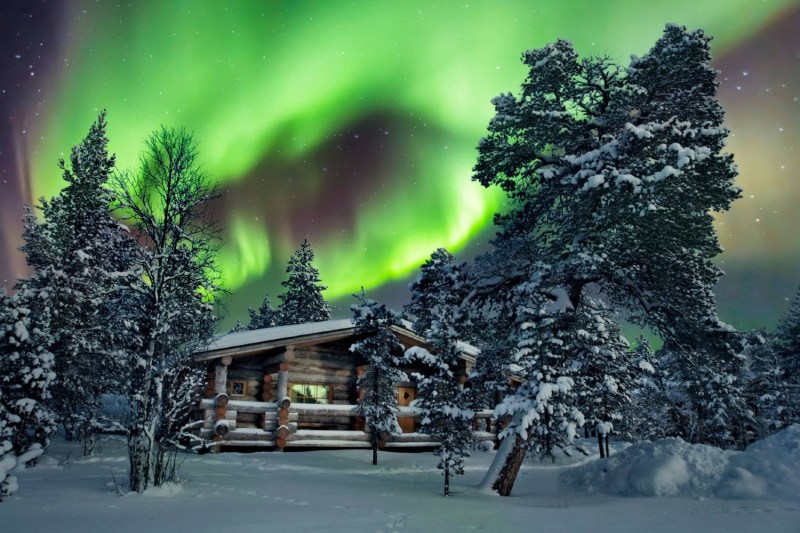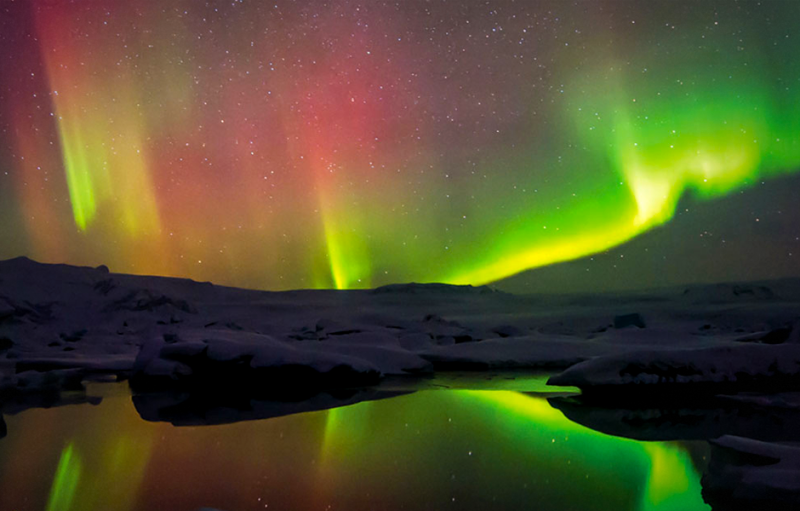
Picture this: You’re standing below a huge blanket of stars, bundled up in a jacket, hat, and gloves. Snow crunches under your boots, and your breath puffs in misty clouds. Suddenly, the night sky comes alive with a dazzling dance of vibrant colors — lush greens, pinks, reds, blues, and even purples. This rainbow of color in the dead of night isn’t the artistry of man-made fireworks, but of the aurora borealis.
Now more than ever, your chances of experiencing this phenomenon first hand are skyrocketing. If you’ve ever dreamed about seeing the northern lights, now’s the time. Don’t miss this opportunity!

Now’s your chance to see the northern lights
The solar cycle is an 11-year period during which the sun goes through a cycle of high and low levels of solar activity. Your chances to see the northern lights increase dramatically during high points of solar activity, which peaks at the solar maximum.
During the solar maximum, the sun feels extra lively and unleashes bursts of energy called solar flares and coronal mass ejections. These cosmic fireworks release a bunch of charged particles into space, and they’re headed our way!
As these energetic particles make their way toward earth; they encounter our trusty magnetic field, and sparks fly. Well, figuratively speaking, of course! Scientists from NASA are saying that by 2025, we’ll be reaching the solar maximum, the peak of this incredible solar cycle.

Where you can see the northern lights
You won’t want to miss this opportunity, because pictures don’t do it justice. To see the aurora borealis most clearly, it’s best to go to a region near the earth’s magnetic poles. Some of the best places to go include:
- Alaska, U.S.: Fairbanks, Anchorage, and the remote areas of the state offer excellent viewing opportunities due to their proximity to the Arctic Circle.
- Canada: Locations such as Yukon, Northwest Territories, and Nunavut, which are far north, away from light pollution, and have clear skies, are they are known for their spectacular displays of the northern lights.
- Iceland: With its dark winter nights and favorable location just below the Arctic Circle, Iceland is a popular destination for experiencing the northern lights.
- Norway: Tromsø, located in Northern Norway, is renowned for its northern lights sightings. The Lofoten Islands and the northernmost regions of the country also offer great viewing conditions.
- Sweden: Abisko National Park in Swedish Lapland is known for its clear skies and frequent northern lights displays, making it a popular destination for aurora chasers. You can even book a hot-air balloon over Lapland from here!
- Finland: The Finnish Lapland region, including places like Rovaniemi and Ivalo, provides excellent opportunities to witness the northern lights amid the pristine Arctic wilderness.
- Russia: The remote regions of Murmansk, Siberia, and the Kola Peninsula offer chances to witness the aurora borealis.
- Greenland: Due to its location near the Arctic Circle, Greenland provides opportunities to witness the northern lights in its vast, untouched landscapes.
It’s important to note that the northern lights are a natural phenomenon and can be unpredictable. They are most commonly seen during the winter months when nights are longer, darker, and have clearer skies. To maximize your chances of observing the northern lights, it’s recommended to plan your trip during periods of low light pollution, choose locations near the magnetic poles, and monitor the northern lights forecast for geomagnetic activity.



